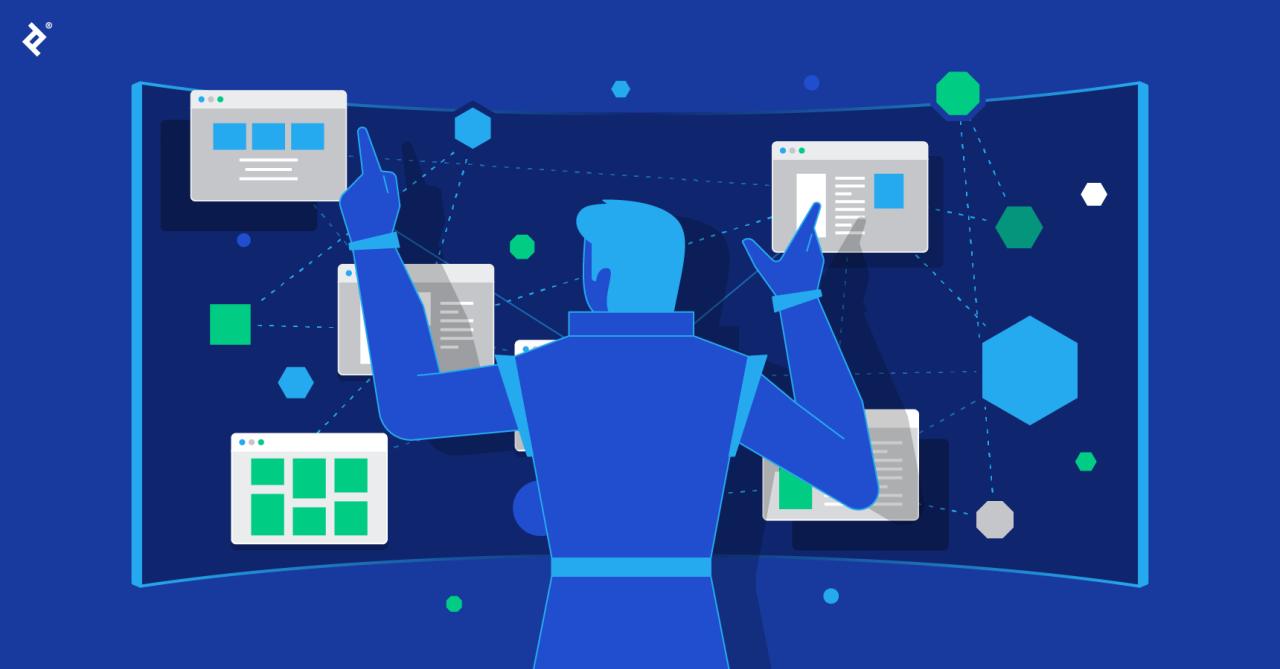Crafting Your Online Portfolio: Showcase Skills and Attract Clients
In today’s digital landscape, having a strong online presence is no longer an option, it’s a necessity. But for creators, freelancers, and independent professionals, it’s especially crucial. Your online portfolio serves as your digital storefront, an opportunity to showcase your skills, experience, and unique value proposition to potential clients. Done right, it can be the key to attracting dream projects, landing high-paying collaborations, and taking your career to the next level.
Laying the Foundation: Self-Discovery and Strategy
Before diving into design and content, it’s essential to introspect and strategize. Ask yourself:
- Who are you? What are your core skills and strengths? What kind of work do you enjoy most? Defining your personal brand helps attract clients who resonate with your values and expertise.
- Who are you targeting? Who is your ideal client? Research their needs, preferences, and communication style. Understanding your audience helps tailor your portfolio for maximum impact.
- What are your goals? Do you want to attract long-term clients, showcase a specific skill, or land freelance gigs? Defining your objective guides the content and format of your portfolio.
Curating Your Showcase: Choosing the Right Content
Your portfolio isn’t about quantity, it’s about quality. Here’s how to curate compelling content:
- Select your best work: Choose projects that demonstrate your expertise, solve client problems creatively, and align with your target audience.
- Variety is key: Showcase diverse projects to highlight your range and adaptability. Include client testimonials, awards, or media mentions to add credibility.
- Tell the story: Don’t just showcase results, delve into the process. Briefly explain the project objectives, your contributions, and the challenges you overcame.
- Focus on visuals: People are drawn to visuals. Use high-quality images, videos, or interactive elements to bring your work to life.
- Keep it relevant: Remove outdated projects or those that don’t align with your current goals and target audience.
![]()
Building Your Platform: Choosing the Right Design and Tools
Now comes the stage where you bring your curated content to life. Consider these options:
- Personal Website: Offers complete control and customization, but requires technical knowledge. Platforms like Wix and Squarespace offer user-friendly drag-and-drop interfaces.
- Portfolio Platforms: Dedicated platforms like Behance, Dribble, and Cargo offer easy setup, pre-designed templates, and built-in communities. Consider their strengths and limitations based on your field and needs.
- Social Media Pages: While not a complete portfolio replacement, leverage LinkedIn, Instagram, or relevant social media platforms to showcase your work and connect with potential clients.
Design Tips for Captivating Attention:
- Simple and elegant: Avoid clutter and prioritize user-friendliness. Ensure a seamless browsing experience across all devices.
- Mobile responsiveness: In today’s mobile-first world, your portfolio must be optimized for smartphones and tablets.
- Strong visuals: Use high-quality images and videos that showcase your work and brand personality.
- Clear navigation: Make it easy for visitors to find your best work, contact information, and about section.
- Unique voice: Inject your personality and brand into the design and language to stand out.
Optimizing for Visibility: Attract the Right Clients
Building a portfolio is only half the battle. Attract potential clients by:
- Search Engine Optimization (SEO): Use relevant keywords and optimize your website content and page titles. Consider online directories for further visibility.
- Networking: Actively engage with potential clients on LinkedIn, industry forums, and relevant online communities. Share your work, participate in discussions, and build relationships.
- Social media marketing: Utilize social media platforms to share your portfolio, engage with potential clients, and showcase your expertise.
- Collaborations: Partner with other professionals in your field for joint projects, guest blog posts, or cross-promotion to expand your reach.

Beyond the Basics: Keeping Your Portfolio Up-to-Date
Your portfolio is a living document that should evolve alongside your career. Regularly update it with new projects, remove outdated work, and refine your content to reflect your current skillset and goals.
Remember:
- Authenticity is key: Let your personality shine through and create a portfolio that feels genuine and engaging.
- Focus on storytelling: Don’t just showcase what you did, tell the story behind your work and the impact it made.
- Proofread meticulously: Typos and grammatical errors create a negative impression. Ensure your portfolio is polished and error-free.
Seek feedback: Ask colleagues, mentors, or potential clients for constructive criticism to improve
Content Creation Craze: Mastering Different Formats for Maximum Online Revenue
The online world is flooded with content. Blogs jostle with podcasts, Instagram reels battle it out with YouTube shorts, and ebooks vie for attention against endless Twitter threads. In this bustling content jungle, creators face a critical question: how to stand out and turn their passion into profit? The answer lies in diversifying formats and becoming a master of multiple mediums.
Why Format Matters: Reaching the Right Audience, Right Now
Gone are the days when a single blog could dominate a niche. Today’s audiences are diverse, consuming information in different ways depending on their mood, purpose, and attention span. A long-form blog post might be perfect for deep dives, while a quick infographic offers an easily digestible overview. Understanding these preferences and matching your content to them is key to reaching the right audience at the right time.
Let’s explore some popular formats and their unique strengths:
- Blog Posts: Established and versatile, blogs offer in-depth exploration of topics, building authority and fostering community. Ideal for SEO, thought leadership, and evergreen content.
- Videos: The undisputed king of engagement, video grabs attention, sparks emotions, and builds personal connections. Great for tutorials, demonstrations, storytelling, and live interactions.
- Podcasts: Intimate and accessible, podcasts allow for deep conversations, expert interviews, and on-the-go consumption. Perfect for niche audiences, thought leadership, and building loyal followings.
- Infographics & Visuals: Eye-catching and concise, infographics present complex information in an easily digestible way. Ideal for data visualization, statistics, and quick summaries.
- Social Media Content: Fast-paced and interactive, social media allows for bite-sized updates, news-sharing, and building communities. Excellent for brand awareness, audience engagement, and driving traffic to other platforms.
- Ebooks & Guides: Comprehensive and valuable, ebooks offer in-depth knowledge and solutions for specific problems. Perfect for building email lists, establishing expertise, and generating premium content sales.
Mastering the Mix: Finding Your Content Cocktail
The key to maximizing online revenue lies not in choosing a single format, but in blending them strategically. This allows you to:
- Reach a wider audience: Cater to different learning styles and preferences by offering content in various formats.
- Increase engagement: Keep your audience hooked by providing fresh and diverse experiences.
- Boost SEO: Utilize different formats for targeted keywords and backlinks, improving search engine visibility.
- Drive conversions: Offer valuable content in various formats, guiding users through the sales funnel.
Here’s how to create a winning content mix:
- Identify your niche and target audience: Understand their needs, preferences, and preferred content formats.
- Analyze your strengths: Play to your talents and areas of expertise. Do you enjoy writing, speaking, or creating visuals?
- Set your goals: Are you aiming for brand awareness, lead generation, or direct sales? Align your format choices with your goals.
- Experiment and iterate: Try different formats, track their performance, and adapt your strategy based on results.
Remember, consistency is key. Regularly creating high-quality content across various formats builds trust, keeps your audience engaged, and establishes you as a thought leader in your field.
Monetizing Your Multifaceted Content
With a strong content mix in place, you can unlock numerous revenue streams:
- Advertising: Display ads on your website, YouTube channel, or podcast.
- Affiliate marketing: Promote relevant products and earn commissions on sales.
- Sponsored content: Create content for brands in exchange for payment.
- Premium content: Offer exclusive guides, ebooks, or courses for paying subscribers.
- Direct sales: Sell your own products, services, or merchandise.
Remember, focus on providing value first. Your audience will be more receptive to monetization efforts if they perceive your content as genuine and helpful.

Tools and Resources to Get You Started
Navigating the diverse world of content creation can be daunting. Luckily, there are tools and resources to help you on your journey:
- Content management systems (CMS): Platforms like WordPress or Squarespace simplify website creation and content management.
- Video editing software: Free options like DaVinci Resolve or paid tools like Adobe Premiere Pro help you create high-quality videos.
- Audio editing software: Audacity is a free and popular choice for podcast editing, while Adobe Audition offers advanced features.
- Graphic design tools: Canva provides user-friendly design templates, while Adobe Photoshop caters to advanced needs.
- Social media management tools: Hootsuite or Buffer schedule and manage your social media posts effortlessly.
Email marketing platforms: Mailchimp or ConvertKit help you build email lists and engage your audience.
From Hobby to Empire: Turning Your Passion into a Profitable Online Business
Have you ever dreamt of transforming your favorite pastime into a thriving online business? The spark within you ignites when you indulge in your hobby, and the thought of sharing it with the world and earning a living doing what you love is deeply enticing. Well, dream no more! The digital landscape has opened doors for countless individuals to weave their passions into profitable online ventures, building empires from the ground up. But where do you begin?
Fueling Your Passion Fire:
The first step lies in introspection. Delve deep into your hobbies and identify those that truly light your fire. Does woodworking bring you immense satisfaction? Perhaps baking intricate cakes sparks a creative joy no other activity can match. Remember, building a sustainable business requires dedication and perseverance, so choosing something you genuinely relish is crucial.
Validating Your Niche:
Once you’ve identified your passion project, it’s vital to conduct market research and assess its viability as an online business. Is there a demand for your offerings? Who is your target audience, and what are their pain points? Utilize online tools and forums to understand the existing competition and carve out your unique niche.
Building Your Digital Domain:
The next step is establishing your online presence. Create a website or blog that serves as your virtual storefront. Showcase your expertise, passion, and offerings with captivating content. High-quality visuals, engaging writing, and clear information are key to grabbing your audience’s attention. Social media platforms like Instagram, Facebook, and YouTube can be invaluable tools for building a community and promoting your business.
Monetization Magic:
Now comes the exciting part – turning your passion into profit! Several avenues await you:
- Selling Products: If your hobby involves creating physical goods, like handcrafted jewelry or knitted scarves, establish an online store to sell them directly to your audience. Utilize platforms like Etsy or Shopify to reach a wider market.
- Offering Services: Do you have expertise in cooking, web design, or photography? Leverage your skills by offering paid services online. Platforms like Fiverr and Upwork can connect you with potential clients.
- Content Creation: Share your knowledge and passion through informative blog posts, engaging videos, or insightful online courses. Monetize your content through advertising, subscriptions, or affiliate marketing.
- Coaching and Consulting: Become a mentor or consultant, guiding others who share your passion. Offer personalized advice, workshops, or one-on-one coaching sessions in exchange for a fee.
Remember, Rome Wasn’t Built in a Day:
Building a successful online business takes time, effort, and consistent dedication. Don’t be discouraged by initial setbacks or slow growth. Stay passionate, be patient, and constantly learn and adapt.

Essential Ingredients for Success:
- Exceptional Quality: Ensure your products, services, and content are top-notch. Delivering consistent value is key to building trust and attracting loyal customers.
- Engaging Storytelling: Share your passion authentically through captivating narratives. Let your enthusiasm shine through in your content and connect with your audience on an emotional level.
- Community Building: Foster a sense of community around your brand. Interact with your audience, answer their questions, and actively engage in conversations. Loyal customers become your biggest brand advocates.
- Marketing Savvy: Understand your target audience and tailor your marketing strategies accordingly. Utilize social media, email marketing, and SEO optimization to reach the right people.
- Adaptability and Growth: The online landscape is constantly evolving. Stay informed about trends, embrace new technologies, and be willing to adapt your strategies to remain competitive.
From Hobby to Empire:
By following these steps and nurturing your passion with dedication, you can transform your hobby into a thriving online business. Remember, the journey itself is rewarding, filled with learning, growth, and the joy of connecting with people who share your passion. So, take the leap, ignite your entrepreneurial spirit, and watch your passion empire rise!
Bonus Tip: Never underestimate the power of networking. Connect with other passionate individuals in your niche, collaborate on projects, and learn from each other’s experiences. Together, you can create a supportive community that fuels your individual journeys to success.
Elevate Your Business: AI Implementation Consulting Services
Artificial intelligence (AI) is no longer a futuristic concept; it’s rapidly transforming business landscapes across industries. However, navigating the complexities of AI implementation can be daunting, leaving many businesses unsure where to begin. This is where consulting services for AI implementation step in, acting as a bridge between AI potential and tangible business value.
Why Choose AI Consulting Services?
Integrating AI successfully requires expertise beyond simply acquiring technology. Consulting services offer several advantages:
- Strategic Guidance: Consultants assess your needs, identify suitable AI applications, and create a tailored roadmap for achieving your business goals.
- Technical Expertise: Navigating the vast array of AI tools and platforms can be confusing. Consultants possess the technical knowledge to select the right solutions and ensure seamless integration.
- Data Management: Extracting insights from data is crucial for AI success. Consultants help you gather, clean, and prepare your data for optimal use in AI models.
- Change Management: AI adoption requires organizational adjustments. Consultants guide you through cultural shifts, employee training, and building internal capabilities.
- Risk Mitigation: Ethical considerations and potential biases are concerns. Consultants help ensure responsible AI development and address potential risks proactively.

Key Areas of Service:
AI consulting services encompass various functionalities adapted to your specific needs:
- AI Strategy Development: Define your AI goals, identify use cases, and prioritize initiatives.
- Technology Selection & Implementation: Analyze and choose the most suitable AI tools and platforms.
- Data Architecture & Management: Establish robust data infrastructures for AI-driven insights.
- Model Development & Deployment: Train and deploy custom AI models tailored to your business needs.
- Performance Monitoring & Optimization: Continuously refine and improve your AI models for optimal results.
- Governance & Ethics: Ensure responsible AI development aligned with ethical principles.
Impact on Business Functions:
AI consulting services can be applied across various business functions, unlocking significant potential:
- Marketing & Sales: Personalize customer experiences, optimize campaigns, and predict customer behavior.
- Operations & Supply Chain: Improve efficiency, optimize logistics, and predict maintenance needs.
- Product Development: Generate innovative ideas, personalize products, and predict market trends.
- Finance & Risk Management: Automate tasks, detect fraud, and make informed financial decisions.
- Customer Service: Improve response times, personalize interactions, and offer proactive support.

Choosing the Right Consultant:
With the growing demand for AI services, selecting the right consultant is crucial. Look for partners with:
- Industry Expertise: Experience in your specific industry and understanding its unique challenges.
- Technological Prowess: In-depth knowledge of various AI tools and platforms.
- Proven Track Record: A portfolio of successful AI implementations with tangible results.
- Collaborative Approach: A commitment to partnering with you and understanding your specific needs.
- Transparency & Communication: Clear communication throughout the process, ensuring you understand each step.
The Road Ahead: A Collaborative Journey
Embarking on your AI journey with experienced consulting services empowers you to harness the immense potential of this transformative technology. By working collaboratively with experts, you can unlock growth, innovation, and increased efficiency, while navigating the complexities and ensuring responsible development. Remember, AI is not just a technology; it’s a strategic investment in your future, and the right consulting partner can be your guide to success.
Revolutionizing Sales: A Marketplace for AI-Powered Automation Tools
The sales landscape is evolving rapidly. Traditional methods are being superseded by AI-powered tools that automate tedious tasks, generate qualified leads, and nurture customer relationships with unprecedented efficiency. However, navigating the ever-growing market of AI solutions can be overwhelming for businesses. Here’s where your vision of a “Marketplace for AI-Powered Sales Automation Tools” comes in, promising to connect businesses with the right tools to fuel their growth.
The Need for a Unified Platform:
- Fragmented Market: Businesses struggle to identify the best-fit AI tools amidst a plethora of niche offerings.
- Information Overload: Evaluating individual tools is time-consuming and requires technical expertise.
- Integration Challenges: Integrating multiple tools from different vendors can be complex and costly.

Your Marketplace’s Value Proposition:
- One-Stop Shop: Offer a curated selection of AI-powered sales automation tools across various categories, like lead generation, prospecting, and CRM.
- Simplified Discovery: Implement effective search, filtering, and comparison tools to help businesses find the perfect solution.
- Vendor Vetting: Ensure quality and trust by vetting vendors according to strict criteria and user reviews.
- Seamless Integration: Facilitate easy integration with existing CRM systems and other sales tools.
- Data-Driven Insights: Provide usage analytics and market trends to help businesses optimize their tool selection.
Key Features to Consider:
- Tool Categories: Lead generation (e.g., social media prospecting, content marketing automation), prospecting (e.g., intent detection, predictive lead scoring), customer relationship management (e.g., chatbots, sentiment analysis), sales intelligence (e.g., competitor analysis, market insights).
- Vendor Partnerships: Collaborate with leading AI solution providers to offer exclusive deals and ensure tool integration.
- Freemium Model: Offer a freemium model for basic tools and subscriptions for more advanced features, catering to businesses of all sizes.
- Expert Reviews and User Ratings: Incorporate expert reviews and user ratings to enhance transparency and build trust.
- Educational Resources: Provide educational content and case studies to showcase the power of AI in sales automation.
Building a Thriving Marketplace:
- Focus on User Experience: Design a user-friendly platform with intuitive navigation and search functionalities.
- Content Marketing: Create valuable content (blog posts, webinars, etc.) to educate businesses about AI in sales.
- Community Building: Foster a community of users where they can share experiences and best practices.
- Data Security: Implement robust data security measures to ensure user trust and compliance.
- Monetization Strategy: Explore flexible monetization models like subscription fees, commission on sales, or premium listings.
The Future Landscape:
As AI continues to evolve, the demand for intelligent sales automation will only grow. Your marketplace, positioned at the intersection of these trends, has the potential to become a valuable resource for businesses seeking to leverage the power of AI to achieve their sales goals. By prioritizing user needs, building a robust platform, and fostering a thriving community, you can create a marketplace that shapes the future of AI-powered sales success.
Content Personalization with AI-Powered Recommendations: Delivering personalized content recommendations to website visitors based on their browsing behavior and interests.
In today’s information-saturated world, capturing and retaining audience attention is an ongoing battle. Website visitors are bombarded with content, making it crucial to personalize their experience and deliver exactly what they’re looking for. This is where AI-powered recommendations come in, acting as your digital sherpa, guiding visitors on a journey tailored to their unique interests and needs.
Why Personalization Matters:
Imagine entering a bookstore overflowing with genres, and a friendly staff member instantly recommends your favorite author’s latest release. That’s the power of personalization. In the digital realm, AI-powered recommendations do the same, analyzing visitor behavior and suggesting content that resonates deeply.
Here’s why personalization matters:
- Increased engagement: Relevant content keeps visitors engaged, exploring deeper and staying longer on your site.
- Improved conversion rates: Personalized recommendations guide visitors towards products, services, or information they’re likely to convert on.
- Brand loyalty: By understanding and catering to individual preferences, you build trust and foster stronger relationships with your audience.
How AI Powers Personalized Recommendations:
AI acts as the unseen maestro, orchestrating a seamless personalization experience. Here’s a glimpse behind the curtain:
- Data Collection: AI gathers data from various sources, like browsing history, clicks, searches, and even demographics.
- Machine Learning: Powerful algorithms analyze this data, identifying patterns and uncovering user preferences.
- Dynamic Content Recommendations: Based on these insights, AI suggests content that aligns with each visitor’s unique profile.
- Content Optimization: Over time, AI refines its recommendations, adapting to evolving user behavior and ensuring continued relevance.
![]()
Different Approaches to Content Personalization:
The world of AI-powered recommendations isn’t one-size-fits-all. Different approaches cater to specific needs:
- Collaborative Filtering: Recommending content based on what similar users enjoyed, leveraging the wisdom of the crowd.
- Content-Based Filtering: Analyzing the content itself (keywords, topics, themes) to suggest similar articles, products, or videos.
- Hybrid Filtering: Combining both approaches for a more nuanced and accurate recommendation experience.
Beyond Basic Recommendations: Advanced Personalization Techniques:
The world of AI personalization is constantly evolving, offering exciting possibilities:
- Real-time recommendations: Adapt suggestions based on a user’s current behavior and context, like the time of day or device they’re using.
- Micro-personalization: Tailor recommendations on the fly, even within a single page, based on specific actions or clicks.
- Personalization beyond content: Use AI to recommend products, services, or even user interface elements for a truly holistic experience.
_11zon.png)
Leveraging AI for Ethical and Responsible Personalization:
While AI offers immense power, responsible use is crucial. Here are key considerations:
- Transparency: Be clear about how you collect and use data, building trust with your audience.
- Avoidance of bias: Ensure your algorithms are unbiased and don’t perpetuate discrimination.
- User control: Empower users to opt-out of personalization or adjust their preferences.
Conclusion: Embracing the Future of Content Personalization:
By implementing AI-powered recommendations, you can unlock a new level of engagement and effectiveness for your website. Remember, personalization is not about manipulation, but about creating a genuine connection with your audience, understanding their needs, and delivering experiences that truly resonate. As AI technology continues to evolve, keep exploring, experimenting, and embracing responsible practices to stay ahead of the curve and make your content shine in the ever-changing digital landscape.
Hyper-Targeted Ads with AI Audience Segmentation: Utilizing AI to identify and reach highly specific customer segments with personalized ad campaigns.
In today’s information-saturated world, attention is currency. Traditional, “spray-and-pray” advertising approaches are increasingly ineffective, with consumers bombarded with irrelevant messages. This is where hyper-targeted advertising, powered by AI audience segmentation, shines. It’s no longer about reaching everyone; it’s about reaching the right people with the right message at the right time.
What is AI Audience Segmentation?
Imagine dividing your target audience into laser-focused groups based on a multitude of factors beyond demographics. This is the power of AI audience segmentation. Using advanced algorithms, AI analyzes vast amounts of data, including:
- Demographics: Age, location, income, etc.
- Online behavior: Website visits, search queries, social media activity.
- Purchase history: Products bought, frequency, spending patterns.
- Interests and preferences: Inferred from online activity and content engagement.
By crunching this data, AI unveils hidden patterns and segments your audience into groups with distinct characteristics and behaviors. You can then tailor your ad campaigns to resonate with each segment’s specific needs and desires.

The Benefits of Hyper-Targeted Ads:
- Increased ROI: Laser-focused targeting reaches the most receptive audience, maximizing ad spend and conversions.
- Enhanced relevance: Personalized messages resonate better, leading to higher engagement and click-through rates.
- Improved brand building: Tailored campaigns foster deeper connections with specific customer segments.
- Dynamic optimization: AI allows for real-time campaign adjustments based on audience behavior and performance.
- Deeper insights: Data analysis reveals valuable customer understanding beyond demographics.
Examples in Action:
- Retailer X: Segments customers by past purchases and browsing behavior. They serve discount ads for specific products to customers nearing their estimated repurchase cycle.
- Travel agency Y: Uses AI to identify potential travelers based on online searches and social media activity. They then target these segments with personalized ads showcasing dream destinations and travel deals.
- Streaming service Z: Analyzes viewing habits to segment users by genre preferences. They then serve targeted ads for new shows within each user’s preferred genre.
Beyond the Hype: Ethical Considerations
While AI-powered targeting offers immense benefits, it’s crucial to approach it responsibly. Ethical considerations include:
- Transparency: Users should be aware of how their data is used for targeting and have control over its usage.
- Avoiding bias: Algorithms should be developed and trained to avoid perpetuating biases that could lead to discriminatory outcomes.
- Privacy protection: User data should be secured and used responsibly, respecting privacy rights and regulations.
By prioritizing responsible development and ethical practices, we can ensure AI-powered targeting benefits both businesses and consumers, fostering a more personalized and mutually beneficial advertising ecosystem.

The Future of Hyper-Targeted Ads: Personalization at Scale
AI audience segmentation is still evolving, but the future promises:
- Granular targeting: Targeting segments based on micro-behaviors and real-time insights.
- Contextual awareness: Ads seamlessly integrated into relevant online contexts and environments.
- Predictive targeting: AI anticipating customer needs and delivering ads before they even arise.
As technology advances, hyper-targeted ads will become even more personalized and influential. Consumers will expect ads that feel less like interruptions and more like helpful suggestions. Businesses that embrace ethical AI-powered targeting will be well-positioned to navigate this future and build meaningful connections with their audiences.
AI for Remote Work Management: Performance Tracking & Collaboration
With the surge in remote work, organizations are seeking innovative ways to manage their distributed teams effectively. Artificial intelligence (AI) emerges as a powerful tool, offering transformative solutions for employee performance tracking, team collaboration, and overall virtual workplace optimization. Let’s delve into how AI can empower your remote workforce and unlock a new era of productivity and engagement.
Unveiling the Pillars of AI-Powered Remote Work Management:
Enhanced Performance Tracking:
- Data-driven insights: AI analyzes vast amounts of data (work logs, communication patterns, project metrics) to provide granular insights into individual and team performance. By identifying strengths, weaknesses, and potential roadblocks, managers can offer targeted coaching and support.
- Automated feedback: AI-powered bots can deliver regular, personalized feedback based on established performance criteria. This continuous feedback loop fosters self-improvement and keeps employees motivated.
- Predictive analytics: AI algorithms can predict potential performance issues before they arise, allowing managers to intervene proactively and address concerns early on.

Streamlined Team Collaboration:
- Smart scheduling: AI-powered tools can analyze calendars, availability, and preferences to suggest optimal meeting times for geographically dispersed teams, minimizing scheduling conflicts and maximizing time.
- Real-time translation and transcription: AI bridges language barriers and promotes seamless communication through real-time translation of messages and calls, as well as automated transcription of meetings, ensuring everyone stays informed and engaged.
- Virtual collaboration platforms: AI-powered platforms facilitate interactive brainstorming sessions, document co-creation, and knowledge sharing in real-time, fostering a connected and collaborative work environment despite physical distance.
Optimized Virtual Workplaces:
- Automated tasks and workflows: AI-powered automation reduces the burden of repetitive tasks, freeing up employee time for strategic work. This includes automating data entry, report generation, and administrative tasks.
- Personalized learning and development: AI personalizes learning journeys by recommending relevant training materials, courses, and resources based on individual skill gaps and development goals. This ensures employees acquire the necessary skills to excel in their roles.
- Well-being monitoring and support: AI can analyze communication patterns, work activity, and sentiment to identify potential signs of employee burnout or disengagement. Based on these insights, organizations can offer targeted well-being initiatives and support programs.

Embracing the AI Advantage: Key Considerations and Benefits
While AI offers immense potential, it’s crucial to approach its implementation thoughtfully:
- Transparency and trust: Ensure employees understand how AI is used and their data is protected. Transparency builds trust and fosters acceptance.
- Human-centric approach: AI should complement, not replace, human interaction. Focus on leveraging AI to augment human capabilities and foster meaningful connections.
- Ethical considerations: Be mindful of potential biases in algorithms and ensure AI tools are used responsibly and ethically.
Successfully integrating AI into your remote work management strategy can yield significant benefits:
- Increased productivity and efficiency: AI streamlines workflows, automates tasks, and provides data-driven insights, leading to increased output and efficiency.
- Improved employee engagement and well-being: Personalized feedback, targeted support, and well-being monitoring contribute to a positive and engaging work environment, boosting employee morale and retention.
- Enhanced team collaboration and communication: AI-powered tools bridge geographical distances, foster seamless communication, and enable effective collaboration across borders.
- Data-driven decision making: AI provides valuable insights into performance, collaboration patterns, and employee well-being, empowering managers to make informed decisions based on real-time data.
Stepping into the Future: A Glimpse at Evolving AI Solutions
The future of AI-powered remote work management holds exciting possibilities:
- Advanced sentiment analysis: AI will go beyond detecting emotions to understand complex nuances of communication, fostering deeper emotional intelligence within teams.
- Immersive virtual workspaces: AI-powered virtual reality platforms will create more realistic and interactive collaboration environments, further blurring the lines between physical and virtual spaces.
- Hyper-personalized work experiences: AI will tailor the work experience to individual needs and preferences, dynamically adjusting work schedules, learning resources, and communication styles for optimal performance and well-being.
Conclusion: AI and the Future of Remote Work
By leveraging AI responsibly and ethically, organizations can unlock a new era of remote work management, characterized by increased productivity, enhanced collaboration, and a thriving virtual workplace environment. As AI continues to evolve, embracing its potential and implementing it thoughtfully will be key to navigating the future of work with success. Remember, AI is not a magic bullet, but a powerful tool that requires human oversight and ethical considerations. By harnessing its potential, we can create a future where remote work not only survives but thrives.
SaaS Marketing with AI Chatbots: Personalizing customer interactions, qualifying leads, and providing 24/7 support through AI-powered chatbots.
In today’s competitive SaaS landscape, standing out requires personalized engagement, efficient lead qualification, and seamless support experiences. This is where AI-powered chatbots step in, offering a transformative marketing solution that benefits both customers and businesses. Let’s explore how SaaS companies can leverage AI chatbots to:
Personalize Customer Interactions:
Imagine a potential customer landing on your website. Instead of navigating menus or waiting for support, they’re greeted by a friendly chatbot, “Hi! Can I help you find the perfect plan for your needs?” This personalized approach breaks the ice, fosters connection, and guides users towards solutions tailored to their specific requirements. AI chatbots:
- Analyze user data and browsing history: Suggest relevant features, content, and resources based on what interests them.
- Engage in natural language conversations: Understand user intent and respond with empathy, creating a more human-like interaction.
- Leverage dynamic decision trees: Offer personalized recommendations and product suggestions based on user responses.
Qualify Leads Efficiently:
Not all leads are created equal. AI chatbots can act as intelligent gatekeepers, qualifying leads to save your sales team valuable time and resources. Imagine a chatbot asking:
- “What are your biggest business challenges?” or “What features are most important to you?”
- Based on the responses, the chatbot can:
- Score leads based on their fit and readiness to purchase.
- Schedule demos or connect live sales reps only with high-potential leads.
- Collect valuable data on pain points and preferences to inform future marketing efforts.

Provide 24/7 Support & Build Trust:
Customers expect instant answers and solutions. AI chatbots can offer first-line support 24/7, deflecting basic inquiries and resolving common issues without human intervention. This leads to:
- Increased customer satisfaction: Faster response times, improved issue resolution, and readily available assistance.
- Reduced support costs: Chatbots handle simpler issues, freeing up human agents for complex problems.
- Enhanced brand image: Proactive support demonstrates care and responsiveness, building trust and loyalty.
Beyond the Basics: Unlocking Advanced Capabilities:
Modern AI chatbots offer more than just basic interactions. Let’s explore some advanced features:
- Sentiment analysis: Chatbots can detect customer emotions and adjust their responses accordingly, building rapport and de-escalating frustrations.
- Omnichannel presence: Engage customers seamlessly across websites, mobile apps, messaging platforms, and social media, offering a consistent experience.
- Proactive outreach: Chatbots can proactively suggest solutions, offer support, and engage customers based on their past interactions and predicted needs.

Getting Started with AI Chatbots:
Integrating AI chatbots into your SaaS marketing strategy doesn’t require building them from scratch. Several platforms offer:
- Pre-built chatbot solutions: Tailored for specific industries and needs, with customizable options.
- No-code chatbot builders: Allow you to create and configure chatbots without programming knowledge.
- API integrations: Connect with existing marketing and CRM systems for seamless data flow and unified experiences.
Remember:
- Data is key: Train your chatbot with relevant data, including FAQs, support tickets, and product information, to ensure accurate and helpful responses.
- Human touch matters: Chatbots shouldn’t replace human interaction entirely. Offer options to connect with live agents for complex issues or personalized support.
- Track and optimize: Monitor chatbot performance, analyze user interactions, and continuously fine-tune your approach for maximum impact.
By embracing AI chatbots, SaaS companies can personalize customer interactions, qualify leads efficiently, and provide 24/7 support, ultimately driving growth and fostering lasting customer relationships. Don’t wait to join the AI revolution and unlock the potential of intelligent marketing solutions for your SaaS business.
The Future of SaaS: Trends and Technologies Shaping the Industry
The Software-as-a-Service (SaaS) industry is booming, with a projected market value of $313.45 billion by 2027. This explosive growth isn’t random; it’s fueled by evolving trends and transformative technologies that are reshaping the landscape. So, what does the future hold for SaaS? Let’s delve into the exciting innovations that will define the industry in the years to come.
Rise of the Intelligent SaaS: AI & Machine Learning Integration
Artificial intelligence (AI) and machine learning (ML) are no longer futuristic buzzwords; they’re becoming ingrained in SaaS solutions. Expect to see:
- Predictive analytics: AI-powered algorithms will analyze vast data sets to anticipate user needs, recommend courses of action, and optimize workflows.
- Personalized experiences: ML will tailor offerings and interfaces to individual users, creating highly customized and engaging experiences.
- Automated tasks: AI-powered virtual assistants will handle repetitive tasks, freeing up human workers for higher-level engagement.
- Enhanced security: ML algorithms will detect and prevent security threats in real-time, safeguarding user data and system integrity.
Democratization of Development: Low-Code/No-Code Platforms Empowering Businesses
Building custom software used to be the domain of skilled developers. Low-code/no-code platforms are changing that by providing intuitive drag-and-drop interfaces and pre-built modules, allowing businesses of all sizes to:
- Develop custom applications: Quickly build internal tools or customer-facing solutions without extensive coding knowledge.
- Empower citizen developers: Enable non-technical individuals to contribute to app development, fostering innovation and agility.
- Reduce development costs: Eliminate the need for expensive coding resources, making custom software development more accessible.

Edge Computing: Real-Time Processing at the Source
Cloud computing has revolutionized SaaS, but traditional cloud architectures can experience latency issues. Edge computing brings processing and data storage closer to the source, enabling:
- Real-time decision-making: Analyze data generated by IoT devices and sensors instantly, driving faster and more informed decision-making.
- Reduced latency: Improve responsiveness and performance, particularly for applications requiring low latency, like autonomous vehicles.
- Enhanced security: Data remains closer to its source, potentially minimizing security risks associated with transmission across wide networks.
Verticalization: Industry-Specific Solutions Take Center Stage
The “one-size-fits-all” approach is fading. SaaS providers are increasingly realizing the power of specializing in specific industries. This trend fosters:
- Deep industry expertise: Solutions address the unique needs and challenges of specific industries, offering tailored functionalities and integrations.
- Improved user experience: Industry-specific features enhance user adoption and satisfaction as they directly align with workflows and pain points.
- Increased competition: Specialization fosters innovation and drives competition, offering users a wider range of high-quality solutions.
The Data-Driven Future: Security, Privacy, and Transparency
As SaaS relies heavily on data, security, privacy, and transparency become paramount. We can expect:
- Enhanced security protocols: Advanced encryption techniques, multi-factor authentication, and robust cybersecurity measures will safeguard user data.
- Increased data privacy regulations: Stricter regulations like GDPR and CCPA will continue to shape data collection, storage, and usage practices.
- Focus on data transparency: SaaS providers will prioritize transparency about data practices, giving users clearer control over their information.

Subscription Evolution: Beyond the Simple Monthly Fee
Subscription models are diversifying to cater to different user needs and preferences. Look for:
- Usage-based billing: Pay-as-you-go models tailored to users with fluctuating needs, promoting flexibility and cost-effectiveness.
- Tiered subscriptions: Different subscription tiers with varying functionalities and features cater to diverse user segments and budgets.
- Outcome-based pricing: Payment linked to achieved results aligns provider success with user outcomes, fostering trust and value creation.
Embracing Hybrid & Multi-Cloud Deployments
No single cloud provider delivers everything. Companies will increasingly opt for hybrid and multi-cloud deployments, utilizing:
- Best-of-breed solutions: Leverage different cloud providers based on their strengths and specific needs, enhancing functionality and agility.
- Improved disaster recovery: Spread data and services across multiple cloud providers, ensuring greater resilience and business continuity.
- Flexibility and scalability: Adapt quickly to changing needs by scaling resources up or down across different cloud environments.
Conclusion: The Future of SaaS is Bright
The SaaS industry is on an exciting trajectory, driven by technological innovations and ever-evolving user expectations.












